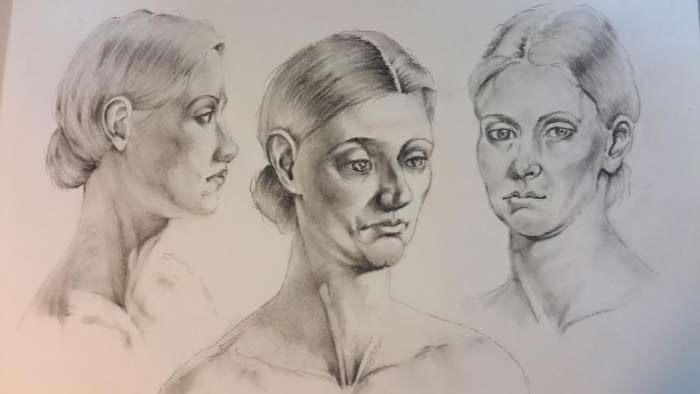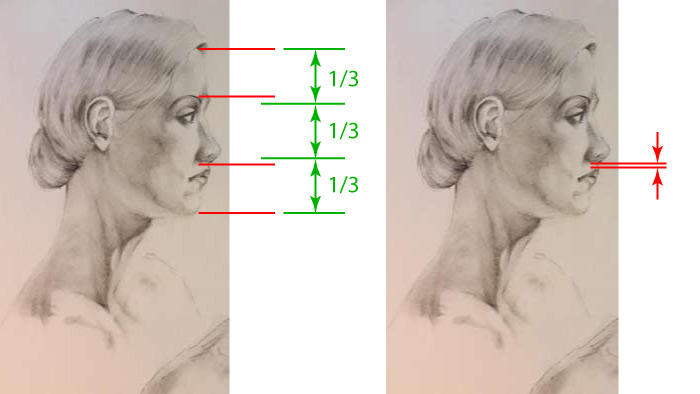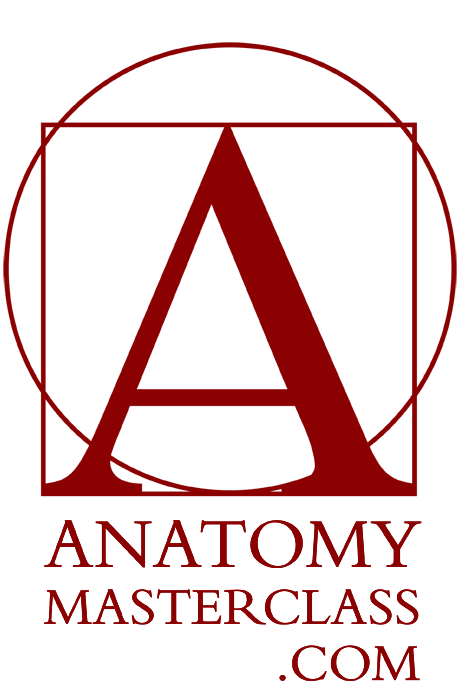Study of Three Faces

Portrait drawings by Malinda, Anatomy Master Class student
Thanks to the Anatomy Master Class, I am diligently practicing what you have taught. I took the class a year ago and continue to refer to it. As I read some of your critiques of some of the other artists, I am able to improve on my own methods.
I am a retired nurse and feel as if the anatomy drawing course has helped improve my techniques tremendously. I feel, at this point, I need your critique of my own work. Measuring the placement of features is still a problem for me.
My goal is to become an oil portrait painter. I have enrolled in the Old Masters Academy course and am finding it exceptional. I am halfway through making the charts. Such an inspiration.
Lastly, I want to thank you for your efforts in putting together these very much needed courses. As an instructor during my last years of nursing, having to develop training courses for students, I can wholeheartedly see the effort.
Thank you again for your devotion to this wonderful endeavor.
Malinda Foster
Feedback from Vladimir London, Anatomy Master Class tutor
Dear Malinda,
Many thanks for your positive feedback about our art courses. We really appreciate it.
Your portrait drawings are very good; well done. Many art students would love to have your drawings skills.
Your drawing style is great. You also have a good feel for tonal values.
Here's what you must pay attention to in drawing: proportions, alignment and anatomy.
Some minor things can be amended to improve the overall look of three portraits.
I'll mention some of them below:
1. Proportions
I'm sure you know one of the main proportions of a human face. A face can be divided into three equal sizes: from the chin to the base of the nose, from the base of the nose to the eyebrows and from the eyebrows to the hair roots.
In your first portrait, the nose is a bit long. However, the distance from the base of the nose to the upper lip is rather small.

Here's a tip for how to spot long noses in drawings. The distance from the top of the nose wings to the bottom edge of the skull's eye socket is quite small – about the width of one finger. You can see that it is not the case in your first portrait.
2. Alignments and symmetry
Horizontal lines of facial features should be parallel to each other. Even a small discrepancy in alignment would be noticeable in portrait artwork.
For example, in the third portrait, the virtual lines of the eyes, the nose and the mouth are not parallel to each other. Such a misalignment skews the face.
Although not a single face in the world is absolutely symmetrical, in art it is better to strive for symmetry to avoid misplacement of facial features.
For example, should you draw a vertical virtual line of the face from the middle of the forehead to the bottom of the chin, you would see that the face is not symmetrical, which creates tiny misalignment of the facial features.

3. Anatomy
A proficient artist draws not what he or she sees, but what he or she knows. This very much applies to the anatomy of the human body.
You know that the sternocleidomastoid muscle of the neck inserts itself in the base of the skull right behind the ear. In your middle portrait, the model's left muscle points away from the neck instead of spiralling to the skull.

When drawing portraits, always keep constructive drawing principles in mind. Use virtual lines of symmetry, alignments and proportions. Employ cross-contours and the planes of a head and face. Draw what you know about the proportions and anatomy of a human head. Don't be afraid of helpful lines of construction in your artwork; you can plot such lines and leave them without erasing to the very end.
Even if you misjudge proportions, your lines would show that you were thoughtfully drawing with the necessary knowledge.
The last piece of advice I would give you is to draw from life. If your ambition is to become an original skillful portrait artist, there is no other way to learn. Otherwise, you would limit your skills to copying and would always have challenges with drawing from life, memory or imagination.
I hope this gives you clear direction for improving your portrait drawing skills.
To your creative success,
Vladimir London
Drawing Academy tutor
Vladimir, thank you very much for your critique and feedback! I really appreciate it
Malinda Foster
Learn human body anatomy and proportions quickly and easily
One-time payment - Lifetime Membership
$97 USD




